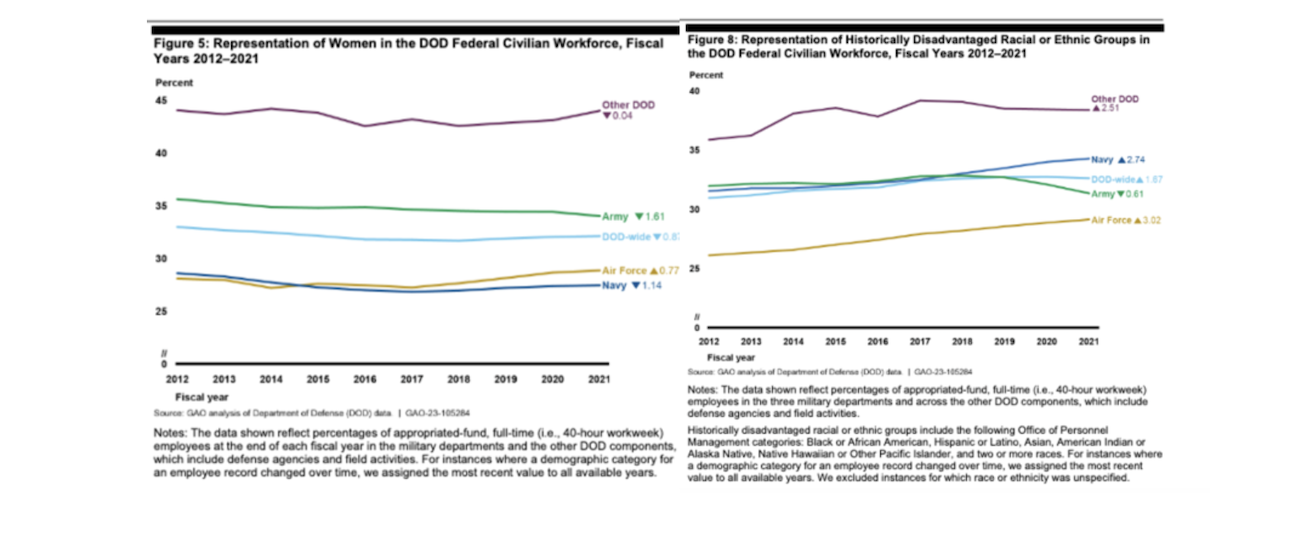
Though it identified the issue, GAO did not analyze reasons why employees left. Phototreat/Getty Images
GAO: The Defense Department could do more to improve diversity in its civilian workforce
The demographics have only changed a little in the past decade.
The Defense Department could do more to improve diversity in its civilian workforce––which is over one-third of the entire federal civilian workforce––as little has changed over the past decade, according to a watchdog.
From fiscal 2012 to fiscal 2021, the proportion of women in the Defense Department’s civilian workforce has decreased slightly (33% to 32.1%) and the proportion of historically disadvantaged groups increased slightly (31% to 32.6%), the Government Accountability Office said in a recent report.
“Since issuing its first diversity strategic plan in 2012, DoD has taken a number of steps to develop policies, mechanisms, and organizations to improve diversity and help ensure that the department reflects the nation it serves,” said GAO. “However, little has changed in the overall representation of women and historically disadvantaged groups in DOD’s civilian workforce over the last 10 years.”
The chart below shows data over the time period across the various DoD civilian workforce components. GAO did not analyze reasons why employees left.

While overall representation for historically disadvantaged groups increased slightly, representation of Black or African Americans decreased from 15.44% to 14.79%. Additionally, women and historically disadvantaged groups were less represented in the upper GS grades and executive level, GAO found. “In general, the more senior the level, the lower the representation for both groups.”

Despite DoD’s efforts, its plans to collect data on barriers and track progress in eliminating them are lacking as are clear roles to oversee such progress, said GAO. Therefore, it made recommendations for reform on all three.
Elizabeth Foster, executive director for DoD’s Office of Force Resiliency, wrote in a response to GAO that the department concurs with the recommendations. She did not elaborate on any of them.







